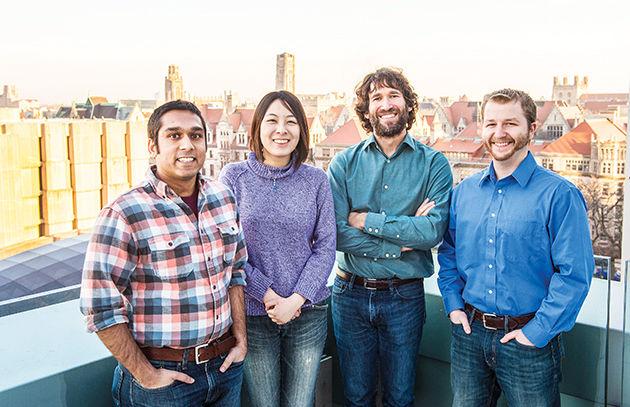A team of scientists recently announced they recorded the sound of two black holes colliding a billion light years away to confirm a prediction of Albert Einstein’s general theory of relativity. Battalion SciTech reporter Srinivas Harshal spoke with Daniel Holz, professor of physics at the University of Chicago and one of the co-authors on the scientific paper that announced finding the gravitational waves, about his experience working on LIGO.
THE BATTALION: What exactly are gravitational waves?
HOLZ: They are ripples in space-time. Einstein conceived gravity as due to the curvature of space-time. Think of it like a heavy mass on a trampoline that causes the trampoline to bend. Heavy masses cause space-time to bend. That means distances and rates at which clocks tick are affected as we go closer to these masses. For example the sun bends space-time. Earth is going in a straight line but [the sun] causes it to go around because of a bending in space-time. Gravitational waves are actual waves in the fabric of space-time. If you drop stones in a pond you get ripples. When you have two black holes crash into each other they cause ripples in gravity and those waves are called gravitational waves.
THE BATTALION: Why is this discovery important?
HOLZ: We are confirming Einstein’s theory, and for the first time we are directly detecting waves as exactly described. These are coming from surfaces of black holes which are incredible, profound objects in physics. We have two black holes travelling at half the speed of light, and we see this incredible warping of space-time. The most important thing is that this gives us a way of probing the universe in ways we never have or could before.
THE BATTALION: What was it like working on this massive project?
HOLZ: I’ve been collaborating on this project for over a year and a half alongside over 11,000 scientists from around the world. For years I’ve been thinking about it, working on it, writing papers on it, and this truly has been the Holy Grail. When you see something work exactly the way it is supposed to work and realize that now you can learn more about the universe, the feeling is just incredible.
THE BATTALION: Now that you’ve made the all-important discovery, what can we expect in the future?
HOLZ: Now it gets really good. We know LIGO works, we have known these black holes crashing each other. We are improving the machine and will turn on the machine in the summer. We’ve never been able to measure the universe this way in the history of human civilization. We’ve learned about most of the by looking through eyes or telescopes. We now have this new sense which listens not to sound gravitational waves. It’s a whole new sense and so a lot of new information. By looking we’d have never know that these black holes collided. We can discover new black holes or neutron stars. We have guesses as to what to expect so it’s all incredibly exciting. The whole science and astronomy community can’t wait because we want to know what’s out there.
THE BATTALION: How exactly does LIGO work?
HOLZ: It measures distances in two perpendicular directions. It is an L-shaped instrument and at end of each arm there are mirrors. The LIGO is measuring distances to those mirrors with extreme precision. When a wave comes through — the ripple in space-time — the distance between mirrors changes in a predictable oscillatory manner. It measures the frequency of oscillation and how often it changes with time. The frequency gets faster and faster over the course of half a second. It’s called a “chirp” that goes like “whoop.” That’s when you know we have gravitational waves colliding.










